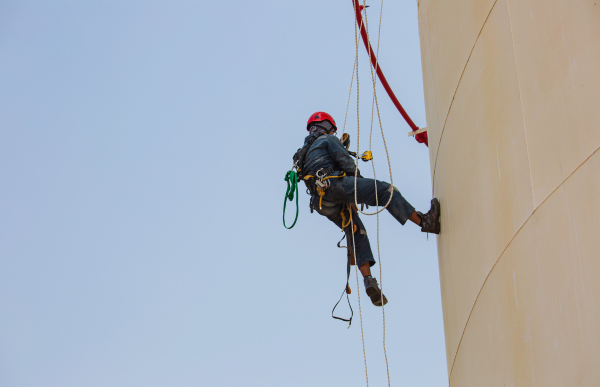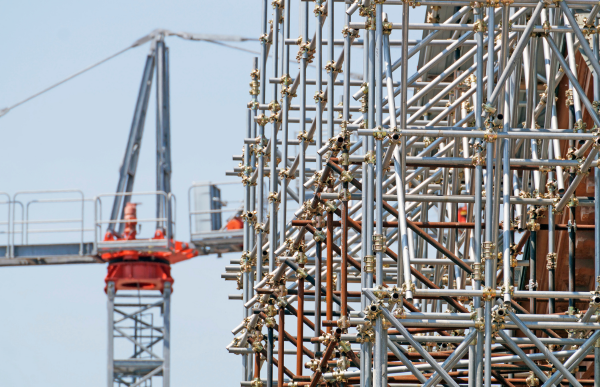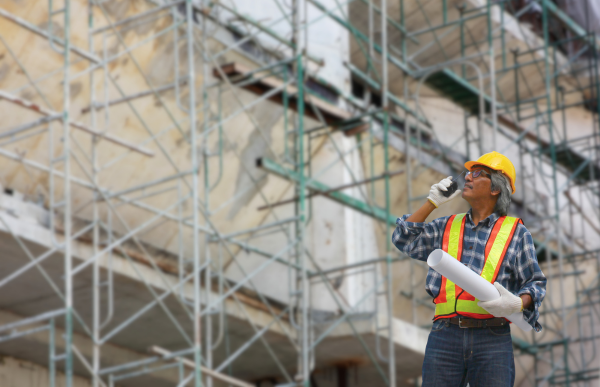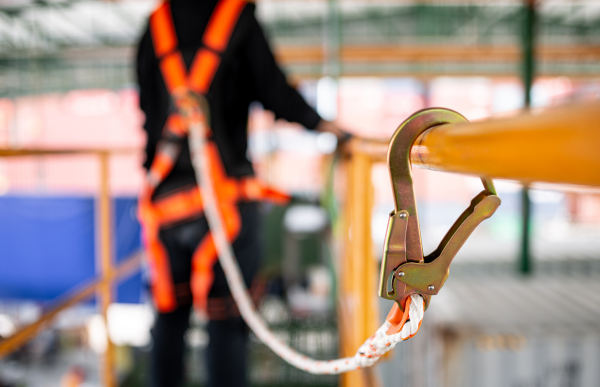Working at heights presents unique challenges and dangers, requiring specialized tools and safety equipment to protect workers from falls and ensure efficiency. Whether you’re a construction worker, window washer, arborist, or maintenance technician, having the right gear can make all the difference between a safe workday and a hazardous situation.
This guide explores the must-have tools and safety gear for working at heights, including harnesses, bosun chairs, fall arrest systems, and other essential equipment to keep you secure while working above ground.
1. Safety Harnesses: The First Line of Protection

A safety harness is one of the most critical pieces of personal protective equipment (PPE) for anyone working at heights. It distributes the force of a fall across the strongest parts of the body, reducing the risk of serious injury.
Types of Safety Harnesses
- Full-Body Harnesses – The best option for fall protection, distributing impact across the chest, shoulders, waist, and thighs.
- Positioning Harnesses – Ideal for tasks where stability is needed, allowing workers to lean while keeping their hands free.
- Climbing Harnesses – Used in industries like tower maintenance and arboriculture, these provide added flexibility and mobility.
Key Features to Look For




A well-fitted harness is the foundation of fall protection. Always inspect it for frays, cuts, or weak points before use.
2. Bosun Chairs: Comfortable and Secure Work Positioning
A bosun chair is a suspended seat used for tasks such as window washing, painting, and building maintenance. It provides workers with stability and comfort while allowing hands-free operation.
Why Use a Bosun Chair?
- Reduces fatigue by offering a comfortable sitting position.
- Improves precision and efficiency for detailed tasks.
- Works well for rope-access jobs and over-the-edge work.
Key Features to Consider



Bosun chairs must always be paired with fall arrest systems and backup safety lines to prevent accidents.
3. Fall Arrest Systems: Your Lifeline in Case of a Fall

Fall arrest systems are designed to stop a worker’s fall before hitting the ground. These systems absorb impact and reduce injuries, making them a critical component of working at heights.
Essential Components of a Fall Arrest System
- Anchor Points – Securely mounted to a structure to hold weight during a fall.
- Lanyards & Shock Absorbers – Prevent a sudden stop by reducing impact force.
- Self-Retracting Lifelines (SRLs) – Automatically adjust the length of the safety line for greater mobility.
Types of Fall Arrest Systems
- Personal Fall Arrest System (PFAS) – Consists of a harness, anchor, and lanyard to prevent falls.
- Retractable Lifelines – Ideal for workers who need freedom of movement without compromising safety.
- Vertical Lifeline Systems – Common in ladder climbing and tower work, allowing a secure ascent.
Properly using a fall arrest system can mean the difference between a minor incident and a life-threatening accident.
4. Ladders, Scaffolding, and Aerial Lifts: Choosing the Right Access Equipment

Selecting the correct access equipment depends on job requirements, height, and mobility needs.
Ladders
- Extension Ladders – Great for reaching rooftops and upper floors.
- Step Ladders – Ideal for quick tasks that don’t require extensive height.
- Multi-Position Ladders – Versatile and adjustable for various tasks.
Scaffolding
- Suspended Scaffolds – Used for window washing and exterior building work.
- Supported Scaffolds – Offer stable platforms for longer projects like painting or construction.
Aerial Lifts
- Boom Lifts – Provide extended reach for construction and electrical work.
- Scissor Lifts – Best for vertical movement in warehouse and maintenance jobs.
Always inspect ladders and scaffolding before use, ensuring stability, proper setup, and weight capacity compliance.
5. Tool Lanyards and Holsters: Preventing Dropped Object Hazards
When working at heights, dropped tools can pose serious dangers to workers below. Using tool lanyards and holsters prevents tools from falling and causing injuries.
Best Practices for Tool Safety



A dropped wrench from a high-rise construction site can cause fatal injuries—always secure tools properly!
6. Helmets and Protective Gear: Extra Layers of Safety

Even with fall protection systems in place, wearing the right protective gear is essential.
Must-Have Protective Equipment
- Hard Hats – Protects against head injuries from falling debris.
- Gloves – Ensures a firm grip when handling ropes, tools, or scaffolding.
- Eye Protection – Shields eyes from dust, sparks, and airborne debris.
- High-Visibility Clothing – Makes workers easily identifiable on busy job sites.
Investing in high-quality, certified safety gear minimizes risks and enhances overall workplace safety.
7. Communication Devices: Staying Connected While Working at Heights
When working at heights, communication is key for coordinating movements and responding to emergencies.
Recommended Communication Tools
- Two-Way Radios – Ideal for construction crews and industrial workers.
- Hands-Free Headsets – Allow communication while using tools or climbing.
- Emergency Alert Systems – Provide quick access to assistance if needed.
A simple radio call can be the difference between a routine task and a rescue operation in hazardous situations.
Final Thoughts: Prioritize Safety and Efficiency

Working at heights comes with inherent risks, but with the right tools and gear, you can perform tasks safely and efficiently. From safety harnesses and fall arrest systems to bosun chairs and tool lanyards, investing in high-quality equipment protects lives and improves productivity. Before each job, conduct a thorough safety inspection, ensure proper equipment maintenance, and follow OSHA and industry safety regulations.

